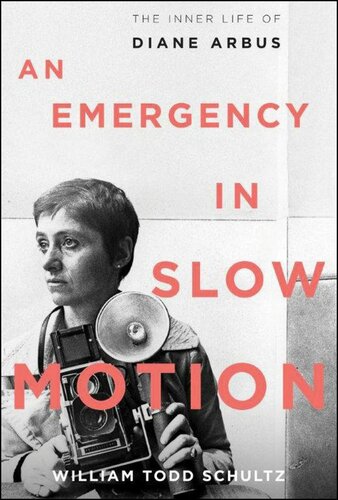
An Emergency in Slow Motion
The Inner Life of Diane Arbus
کتاب های مرتبط
- اطلاعات
- نقد و بررسی
- دیدگاه کاربران
نقد و بررسی

May 16, 2011
Schultz's biography of the talented, deeply troubled photographer Diane Arbus, who committed suicide in 1971, takes the form of an ambitious "psychobiography"âan account of Arbus's inner life in which he regards her photographs through the lens of psychological theory to speculate on her motivations and obsessions. It is the first account of Arbus's life since Patricia Bosworth's acclaimed Diane Arbus in 1989, and Schultz (editor of the Handbook of Psychobiography) makes good use of biographical material released by the Arbus estate since Bosworth's bookâas well as interviews with Arbus's psychotherapistâto shed new light on the photographer's artistic aims, particularly her choice of subject matter: transvestites, circus performers, "freaks." He argues, for example, that Arbus's obsession with twins, whether literal twins or mirror images and doppelgängers, was an expression of her own psychological defense mechanisms. "The bad and the good," he writes, "are kept far apart to protect the good from infiltration." Ideally, this approach of using the work to speculate on the artist's psyche would yield some fresh insight into the work itself. Instead, Schultz's interpretations of Arbus's photographs can be repetitive and shallow. Nonetheless, his sensitivity to Arbus's inner life and the links between mental illness and creativity make this a provocative, if not always persuasive, addition to the literature on Arbus.

June 15, 2011
A theorist of psychobiography offers an example of his favored approach in an exploration of a most perplexing figure, the edgy and controversial photographer Diane Arbus (1923–1971).
Arbus provides a promising canvas for Schultz, who's also written about Truman Capote (Tiny Terror, 2011). He sketches the privileged childhood of Arbus, whose brother was poet Howard Nemerov (the talented siblings engaged in a little youthful sex play, says Schultz), and highlights the significance of an early memory of seeing a shantytown. The author moves briskly through her career, returning continually to the notion that as Arbus' subject were often freaks, so she, too, was one. He dusts off the familiar notion that her photographs are generally about herself—she sought herself, reflected herself, found herself in others. Her final group of subjects—the mentally retarded—she found frustrating to work with, writes Schultz, because she could not elicit from them the interactions she found so essential. The author also focuses on Arbus' sex life, noting how frequently she posed her subjects in their beds (including TV icons Ozzie and Harriet in 1971) and how she sometimes engaged in sex acts with the people she was photographing. She seduced her subjects, writes Schultz, sometimes in multiple ways. An exception was Germaine Greer; their session was a remarkable struggle of wills, which Greer won. Arbus had one failed marriage, a late-life affair that didn't work out, countless sex partners, a battle with hepatitis, an odd course of psychotherapy and issues with cash flow—all culminating in the stress and depression that led to her suicide. Schultz writes in detail about her death and remains uncertain if she fully intended to kill herself.
Though sometimes clanging with psychological jargon, a biography that wisely recognizes the ultimate mystery of every life.(COPYRIGHT (2011) KIRKUS REVIEWS/NIELSEN BUSINESS MEDIA, INC. ALL RIGHTS RESERVED.)

























دیدگاه کاربران